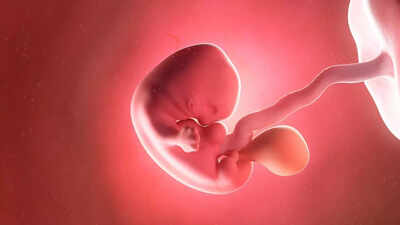In a historic medical breakthrough, a baby named Thaddeus Daniel Pierce was born in July 2025 from an embryo that had been frozen for over 30 years. This sets a new world record for the oldest frozen embryo to result in a live birth, showing the incredible progress in IVF technology and embryo cryopreservation. The embryo was created in 1994 and adopted by a couple in Ohio after being stored for decades. This rare case highlights the possibilities of embryo adoption, offering hope to families struggling with infertility and marking a major milestone in fertility science and medicine.
30-year-old frozen embryo results in healthy birth of world’s oldest baby
The embryo that became baby Thaddeus was originally created through IVF in 1994 for a woman named Linda Archerd, who used one of the embryos at the time and gave birth to a daughter. The remaining embryos were frozen and stored at a fertility clinic. For over 30 years, they remained in cryogenic preservation, frozen in liquid nitrogen at temperatures. In 2023, Linda Archerd decided to make her unused embryos available for embryo adoption, a process that allows other families to adopt and use frozen embryos to conceive children. She chose to work with a Christian embryo adoption agency called Nightlight Christian Adoptions, through their well-known “Snowflakes” program. This program enables embryo donors to select the adoptive family and set specific preferences, such as religion, race, and nationality. According to a BBC report, Linda requested that the embryos be placed with a married, Caucasian, Christian couple from the United States. The embryos were eventually matched with Lindsey and Tim Pierce, a couple from Ohio who had been struggling with infertility for nearly a decade. One embryo was successfully transferred, resulting in the birth of Thaddeus—the world’s oldest baby born from a frozen embryo.Experts say this case proves that long-term freezing does not damage embryo viability, as long as the proper preservation techniques are followed. It also demonstrates the emotional and life-changing impact that embryo adoption can have on families looking for alternative paths to parenthood.
The role of embryo adoption: Giving frozen life a second chance
Embryo adoption is a lesser-known option available to couples who cannot conceive naturally. Unlike traditional adoption, embryo adoption allows the recipient mother to carry and give birth to the child. Embryos originally created by other couples during IVF treatments are donated for future use.In this case, the original embryo donors (Linda and her family) made a deeply personal decision to donate their unused embryos to a faith-based embryo adoption program, which matched them with the Pierce family. The Pierces were open to using older embryos and felt spiritually guided to accept the unique opportunity. The fact that the embryo was 30 years old did not deter them, especially after learning that storage duration has no significant impact on embryo quality if handled correctly.
Medical and ethical implications in the process of fertility
The birth of Thaddeus has medical professionals, ethicists, and hopeful parents talking. Doctors point out that this case proves embryos can remain viable even after decades, making long-term cryopreservation a realistic and safe strategy. For people considering IVF, this offers more flexibility and control over family planning. For instance, couples who freeze embryos in their 20s or 30s may now choose to use them decades later without concern about success rates. Ethically, however, it also brings attention to the large number of unused embryos currently frozen around the world.Should they be preserved indefinitely? Should donors be encouraged to offer them up for adoption? These questions are becoming more pressing as science continues to outpace public awareness and regulation. Nevertheless, the successful birth of a healthy baby from such an old embryo stands as a symbol of hope for millions facing fertility struggles, and shows just how powerful and advanced reproductive medicine has become.







